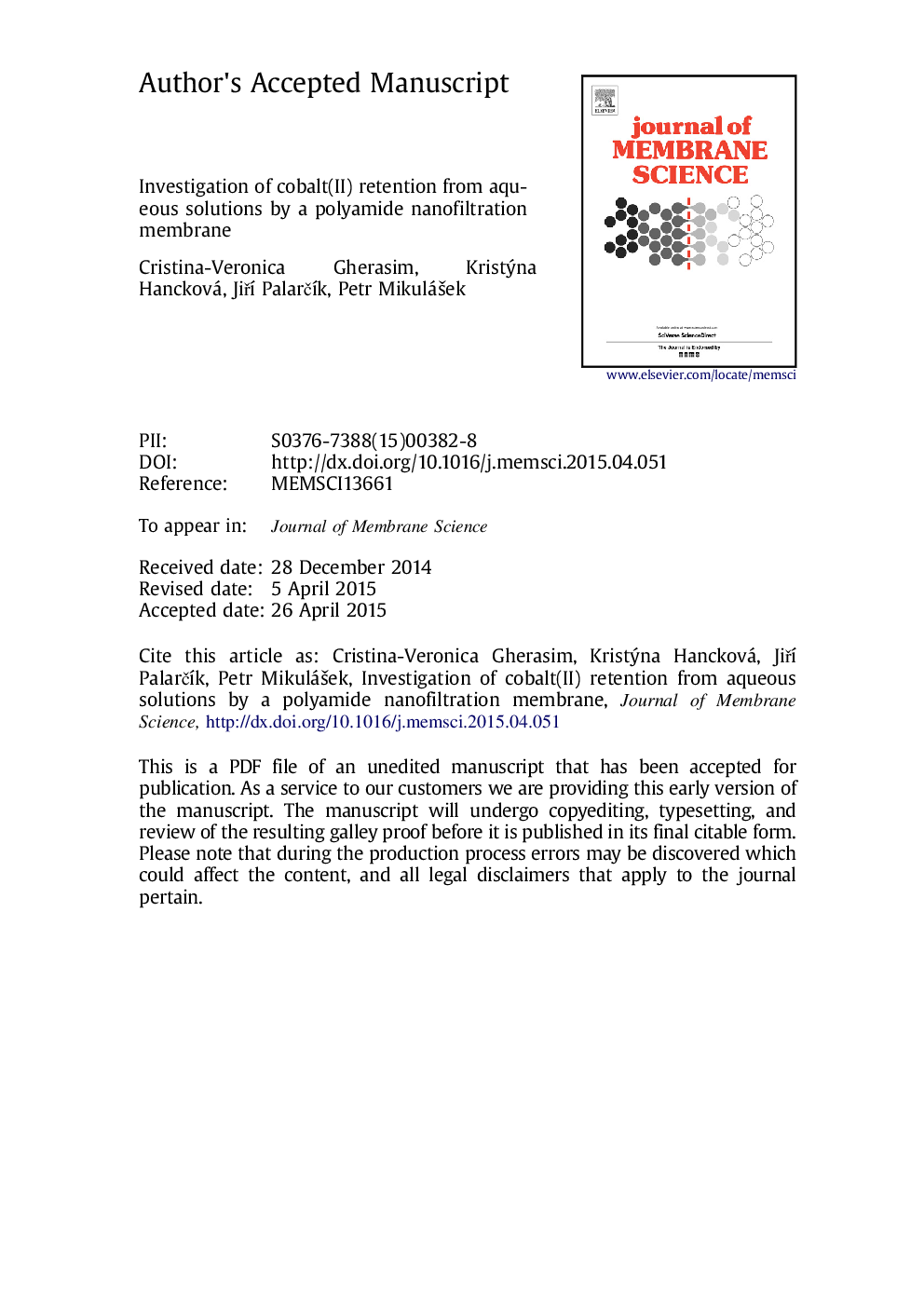| Article ID | Journal | Published Year | Pages | File Type |
|---|---|---|---|---|
| 633021 | Journal of Membrane Science | 2015 | 44 Pages |
Abstract
This study investigates the performance of a polyamide nanofiltration membrane (AFC 40) in the retention of Co(II) ions from aqueous solutions, their separation mechanism under various process conditions and the correlation with the membrane characteristics. The membrane performance is interpreted by analyzing the metal ion rejection and the permeate flux, as well as the proton rejection that completes the metal rejection and membrane characterization data. The results show that the membrane has a high permeability and exhibits an amphoteric behaviour in Co(NO3)2 solutions, and the membrane charge increases on increasing the solution concentration because of the adsorption of cobalt ions. The metal ion rejection increases when increasing the feed concentration in the range 15-1000Â mg Co/L and also by increasing the transmembrane pressure. The optimum operating pressure range is 20-25Â bar as the rejection reaches maximum values. The flux and rejection are significantly enhanced by decreasing the concentration polarization when increasing the feed cross-flow velocity. The observed metal ion rejection reaches â97% for 100Â mg Co/L feed solution at pH 3 and decreases when increasing the feed pH in the range 3-6. The results obtained indicate that Co (II) retention by the AFC 40 membrane is due to a combination of the preferential passage of the most mobile H+ and size and charge exclusion, the first mechanism being dominant. The Spiegler-Kedem model is able to predict with high accuracy the membrane performance over the wide concentration range investigated.
Related Topics
Physical Sciences and Engineering
Chemical Engineering
Filtration and Separation
Authors
Cristina-Veronica Gherasim, Kristýna Hancková, JiÅà PalarÄÃk, Petr MikuláÅ¡ek,
